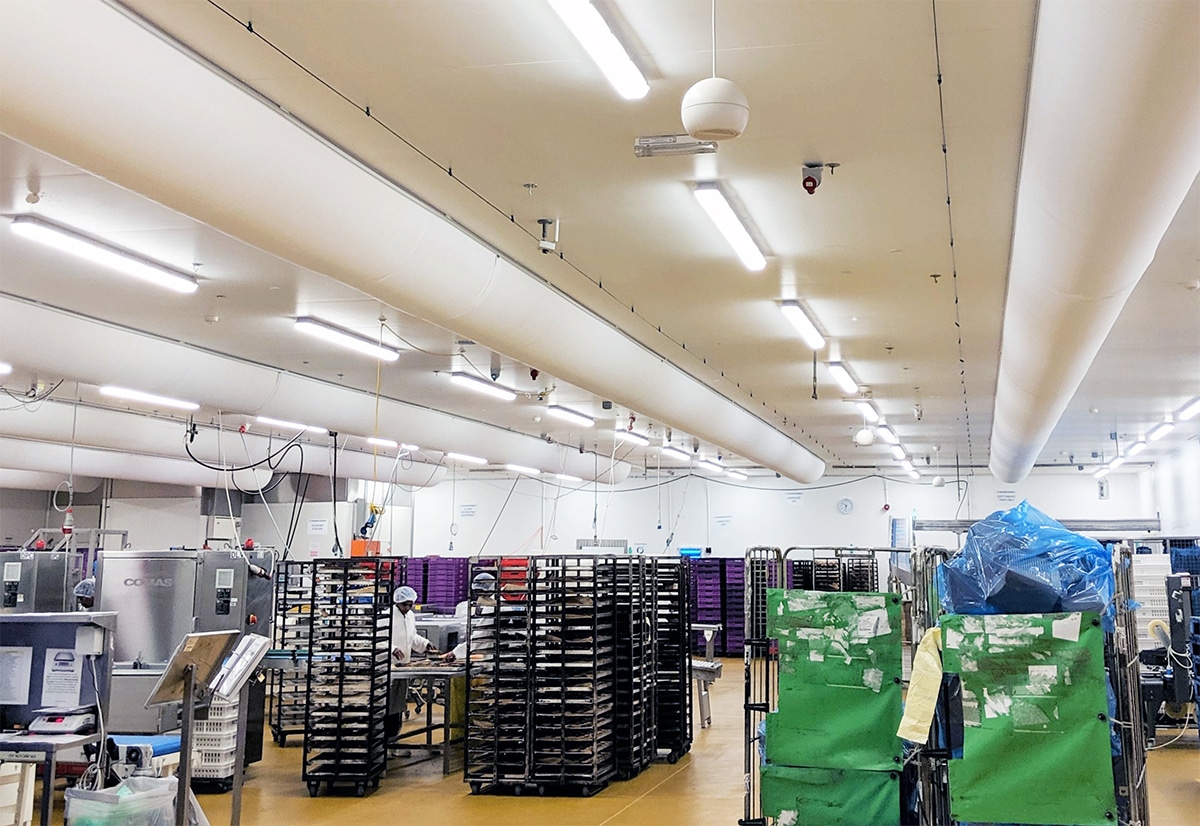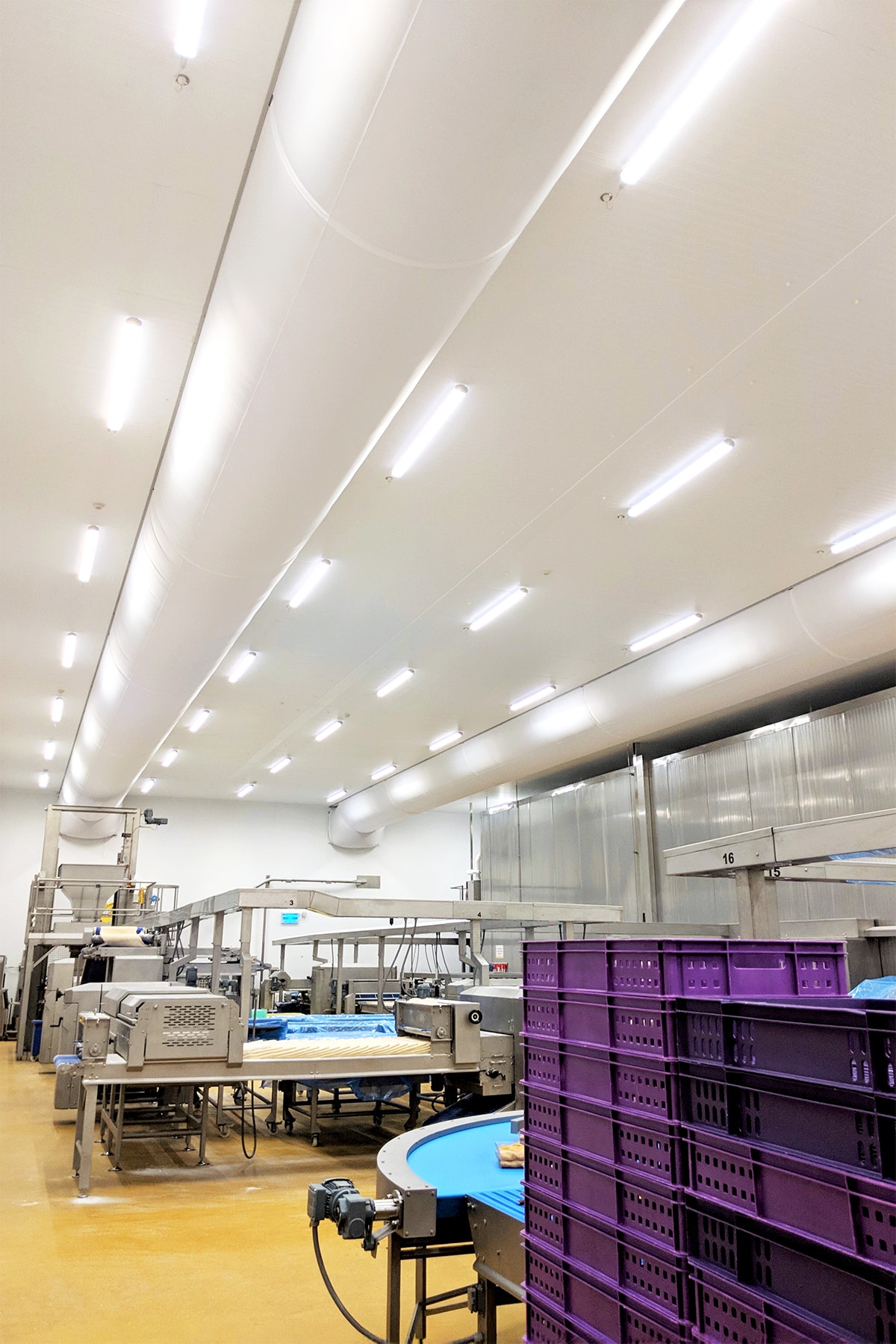Fabric Diffusers for Displacement Ventilation – A Perfect Match


We often think of ‘ventilation’ in terms of air mixing. A traditional ventilation system circulates high momentum supply air and mixes it into the existing air in the room. The idea is that the air coming in through the ventilation system will dilute the stale air already present, resulting in lower pollutant concentrations and better indoor air quality. But that’s not the only ventilation strategy. In the 1970s, a new approach emerged, displacement ventilation, offering lower energy consumption, more thermal comfort, and greater flexibility. Since its inception, the technology has gradually evolved and matured, joining the range of commercial ventilation approaches available to HVAC engineers. It is now found worldwide in many applications, from office buildings to airport terminals. But what is displacement ventilation? And what makes fabric diffusers so suitable for it?
What is displacement ventilation?
Cool air sinks, and warm air rises. Displacement ventilation takes advantage of the thermal stratification effect by using strategically placed diffusers. A typical method involves placing the extract ducts at a higher level and the diffusers at a lower level in the room. The fresh (or cooled) air is dispersed at a low velocity into the area and is slowly warmed by any heat sources present, e.g., people, electronic equipment, or machinery. As its temperature increases, it becomes more buoyant and is steadily displaced by the cooler air below. The warmer stale air eventually reaches the extract grilles, where it is vented out of the space.
In food production areas, displacement ventilation systems are usually set up slightly differently. Here fabric diffusers are positioned at a high level, where they supply large volumes of cool air that falls under its own weight. From this point on it follows the same trajectory as described above.
Displacement ventilation systems work best with a small Δt and many air changes.
Why would you use displacement ventilation?

Some of the benefits of displacement ventilation are:
Thermal comfort. Comfort is practically built-in, thanks to the lack of draughts and the minimal temperature gradient in the occupied zone. Done well, the room feels fresh without being cold. This makes it an excellent fit for schools and offices or anywhere where a comfortable environment leads to more productivity.
Low noise. The air is distributed passively instead of using fans to circulate the air. As a result, displacement ventilation makes less noise than other commercial ventilation approaches. A much quieter system is achieved, which is beneficial in applications such as theatres and libraries where noise levels are a concern.
Energy efficiency. In mixed flow ventilation, the supply air may reach the exhaust grilles before it should, whereas, in displacement ventilation, only the air that has served its purpose is vented from the room. There is also no need to circulate the air mechanically. For these reasons, displacement ventilation is generally more energy-efficient and can lead to energy savings.
Indoor air quality. Pollutants associated with airflow, such as CO2, infectious droplets and particulates, are removed very efficiently from the occupied zone using a displacement ventilation system. While mixed flow ventilation dilutes pollutant concentration throughout the room, the stale air is continuously pushed upwards and away from occupants in displacement ventilation.
However, a good appropriately sized design is crucial to the correct operation and efficiency of the ventilation system.
How can Prihoda fabric diffusers be used for displacement ventilation?
Fabric diffusers are ideal for displacement ventilation. They can disperse air through their entire surface area, allowing them to provide substantial air volumes at low velocities – and they do it noiselessly. Fabric diffusers adapt to room dimensions, with flexible installation options allowing a wide range of position configurations.
All these factors make fabric ducts and diffusers an excellent option for displacement ventilation systems.
Every Prihoda system is bespoke and designed for each specific project. We can create a system that works well with the ceiling height and dimensions of the application. And using precisely designed microperforation patterns, we can achieve the perfect airflow parameters for the application, ensuring that all the advantages of displacement ventilation are preserved.
Interested? Contact us today to discuss your next project.
Looking for more information?
Our experts are on hand to answer any questions. Why not give us a call or drop us a message, We’ll work with you to find the right solution.
Contact us

